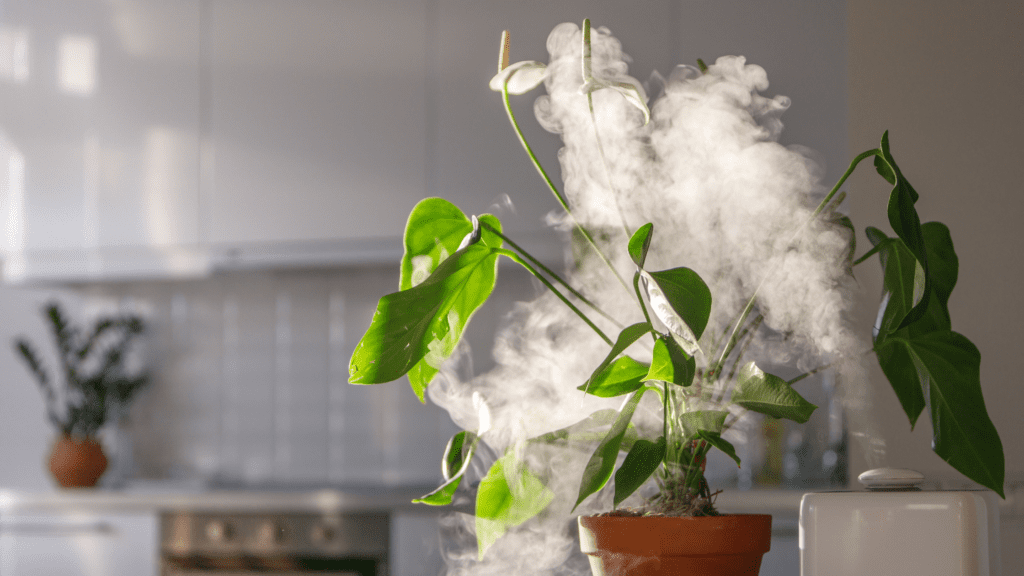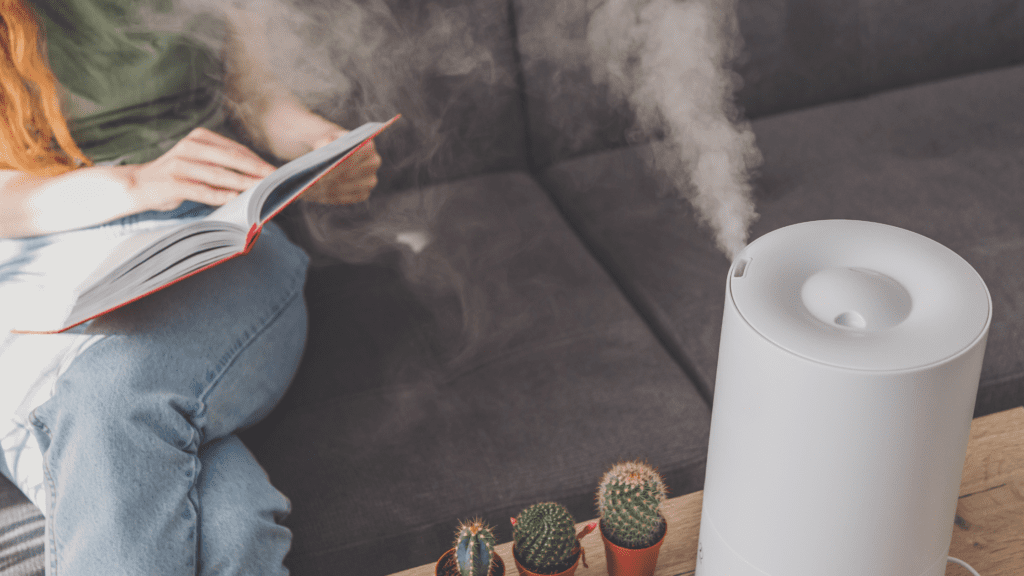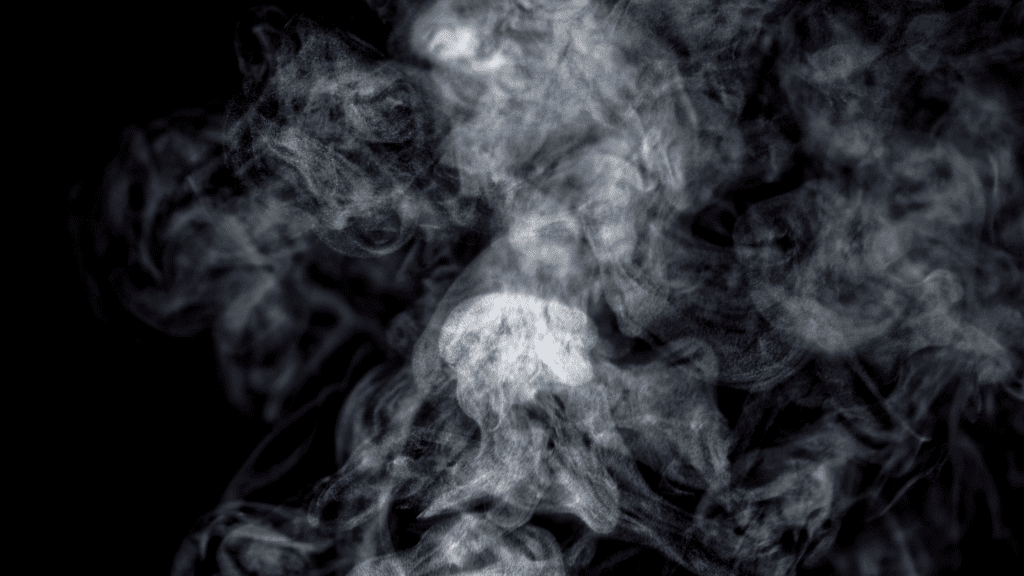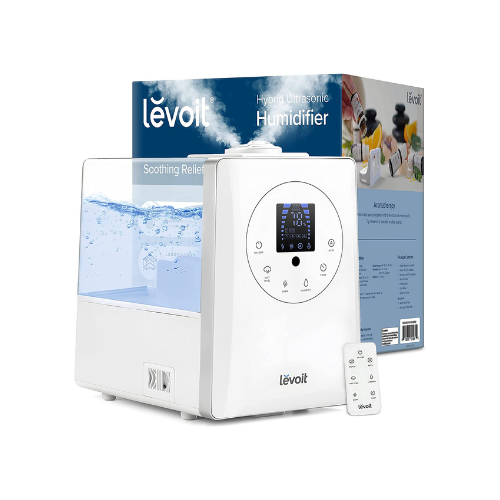Do humidifiers help with congestion
Nasal congestion and chest congestion can be difficult to deal with when they become a common occurrence. While some people struggle with trouble with the nasal passages, nasal congestion, chest congestion, common cold, indoor allergies, etc., as a result of poor indoor air quality, with a few others it can be a sign of serious underlying health conditions.
Healthcare professionals and the Environmental Protection Agency clearly state that high humidity levels and moisture levels in the indoor air are reasons for mold growth, allergens like dust mites, and other flu-like symptoms like stuffy nose, poor sinus health, asthma symptoms, etc.

Many people still wonder do humidifiers help with congestion and if using a humidifier help with easy breathing. Humidified air has its own advantages and disadvantages when the humidity levels are not monitored. In this article, we will discuss why you must use a humidifier to relieve congestion and how to add moisture to the air in the right measure.
Can humidifiers relieve congestion?
Yes! You can use a humidifier to get relief from chest and nasal congestion. However, you must make sure that you do not add more moisture to the air than required. You must add moisture to the air only to meet the ideal humidity levels. Increased moisture levels have their own troubles. Too much moisture in any space is an excellent condition for the growth of bacteria, dust mites, and especially mold growth. Indoor allergies will be on the rise when the air has more moisture.

When you use a humidifier properly, you can find a solution to problems that arise with dry air, poor indoor air quality, and a low humidity level. The symptoms of having dry air, especially in the colder months can include; dry throat, dry mouth, dry nasal passages, and dry skin. Whether the climate is cold or humid, you can rely on home humidifiers to find relief from nasal congestion.
The different types of humidifiers make it possible to add moisture to dry air. Cool mist humidifiers, warm mist humidifiers, ultrasonic humidifiers, impeller humidifiers, evaporative humidifiers, central humidifiers, etc. All types of portable humidifiers and central humidifiers perform the same function of taking in the distilled water added to the unit and converting it into water vapor. The water vapor or mist helps in adding humidity to the space that is excessively dry.

Inhaling the vapor will help to loosen the mucus that lines the nasal passages. Once the mucus is drained, the body will be able to drain it easily making it easy for you to breathe. Humidifiers are also excellent to ease discomfort from congestion in the chest and coughing.
How do you choose the right humidifier for congestion?
Apart from simply using a humidifier, it is important to choose the right type of humidifier. Although all types of portable humidifiers can help to ease breathing and relieve congestion, all healthcare professionals and the Environmental Protection Agency strongly recommend identifying the right type of humidifier that will support adding moisture to the space. Adding humidity must be done correctly to avoid bacteria, dust mites, and mold.

Warm mist humidifier
A warm mist humidifier as the name suggests has a boiling process involved. With the help of internal forced heating systems, the distilled water is made into boiling water. Warm mist humidifiers are highly effective for congestion in the nasal passages. The warm steam will immediately open up airways and loosen mucus.

Although warm mist humidifiers are excellent choices for adults, the boiling water and warm steam used in a warm mist humidifier are not an ideal option to have around children. Any warm mist humidifier or hot water equipment is not recommended to be used around children and pets as it could lead to accidents. Hot water can easily burn sensitive skin.
Certain models of warm mist humidifiers are also available with separate compartments to add essential oils to them. A warm mist humidifier along with the therapeutic effects of essential oils will guarantee to provide instant relief from cold and congestion.
Cool mist humidifier
Cool mist humidifiers are similar in function to warm mist humidifiers. The only difference is that the demineralized water or distilled water is converted into a cool mist. Using tap water in a cool mist humidifier can lead to the formation of mineral deposits and white mites.

A cool mist humidifier is energy efficient and safe around children, but the overall safety features and noise level is higher in a cool mist humidifier. The two types of cool mist humidifiers are Impeller humidifiers and Evaporative humidifiers.
Steam vaporizer
Like warm mist humidifiers, steam vaporizers also have a boiling process. However, the difference between steam vaporizers and warm mist humidifiers is that a steam vaporizer does not have a removable tank.

Ultrasonic humidifier
The best quiet and low maintenance units that can help to add moisture to the air and also help in congestion are ultrasonic humidifiers. These work by generating gentle ultrasonic vibrations. The ultrasonic vibrations are designed to break down the water into tiny particles to be released as cool mist.

From the list of the above humidifier types, you can carefully analyze the features, size, and type that will meet your need and then make the purchase.
Is there anything else you can do to relieve congestion symptoms?
Reliving congestion symptoms in both warm and colder months can be done by using a humidifier and dehumidifier. Several health conditions, especially those caused by mold spores, bacteria, and other allergens can be avoided by using a humidifier and dehumidifier.

Apart from maintaining the ideal humidity level, one can make use of treatments using steam vaporizers with warm mist and essential oils to find immediate relief.
How to decide when to seek medical attention?
Sinus health cannot be compromised if the allergies or difficulty breathing do not settle despite proper treatment. Seek medical help at the earliest for any recurrent cold, cough, or breathing difficulties.

Best humidifier for congestion according to us
The best humidifier to maintain the preferred humidity level is the LEVOIT humidifier. This unit has been designed to provide high-efficiency humidification, covering an area of 753ft² effortlessly. The humidifier allows one to customize the preferred humidity level and let the unit operate on Auto Mode.
The LEVOIT humidifier is equipped with a large 6-liter tank. This tank capacity is sufficient to dehumidify any room or place for 50 hours. Other special features in the LEVOIT humidifier that make it one of the best units in the market are; Automatic On and Off, a built-in sensor, an Aroma box to add in preferred essential oils, user-friendly remote control, Auto shut off when too much moisture is added to the space, quiet operation, etc.
Are you interested in the features built into the LEVOIT humidifier? Visit Amazon.com right away to bring home this unit at the best price and maintain a healthy humidity level.
FAQ Section
1. Should humidifier run all night?
You can let your humidifier run all night. Apart from maintaining the humidity in the room, a humidifier that is running all night will reduce the risk of infections, prevent waking up with dry skin and dry mouth, remove allergens that multiply with dry air, and more. You can be assured of a restful and peaceful sleep when you allow a humidifier to run all night.
However, make sure that the cool mist humidifier or warm mist humidifier has an Auto mode available. This will ensure that the device turns off automatically when the dry air problem is resolved. This will avoid too much moisture from being added to the space.
2. Which is better for congestion warm or cool mist humidifiers?
Both warm mist humidifiers and cool mist humidifiers have their own set of advantages and disadvantages. A warm mist humidifier can be trusted for relief and relaxation, especially including essential oils. On the other hand, for breathing problems and health concerns like persistent allergies, asthma, and cough one can resort to cool mist humidifiers.
3. Should you sleep with a humidifier every night?
As aforementioned, sleeping with a humidifier has health benefits. It is safe and recommended to sleep with a humidifier in the room. Please remember to consult with your physician before you use any device, even a humidifier, that will exert a direct impact on your health.
4. How do you unblock nose at night?
The few other measures to unblock the nose at night, other than using a humidifier are; sleeping with the head elevated, consuming honey before bed, saline rinse, nasal strip, warm shower before bedtime, using decongestant nasal spray, etc.
Consult with your physician and a certified professional before running the humidifier in your home.
Wrapping Up
That’s a wrap on the article. We trust you learned how humidifiers help with congestion. We hope the article clarified your safety concerns and the benefits of using humidifiers for congestion. Share with us in the comments below if you have any experience using humidifiers and which unit is your current favorite.

About The Author
Olivia — a self-confessed air quality addict — is a home climate enthusiast, fresh air advocate, and someone with deep personal experience and knowledge about mold extermination. Her work was mentioned in countless notable humidity publications. Previously she was an editor at Mold Remediation.
